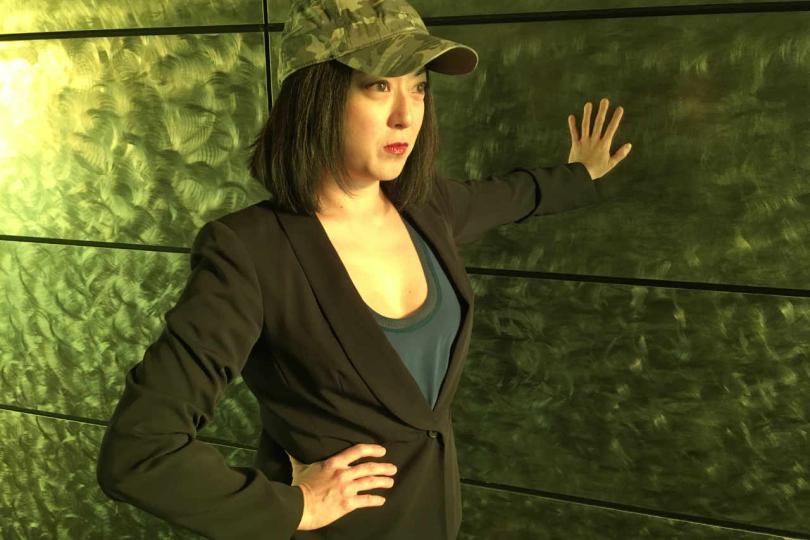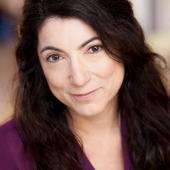Truthiness in Caught at Guthrie Level 9

For a long time, the skeptical questioning of truth and reality was primarily the province of mystics and artists. A generation or two ago, it was mostly advocated by intellectuals who were generally, if loosely, associated with far-Left politics. Today, talk of “fake news” comes almost exclusively from far Right, populist politicians. So it is a little surprising – or perhaps just nostalgic – to see the old questioning of truth and reality in a production (by Full Circle Theater, directed by Rick Shiomi) no one would confuse with far Right propaganda, Christopher Chen’s play, “Caught,” now at the Guthrie Theater.
As with all Full Circle Theater productions, “Caught” features superb performances and Shiomi’s direction is artful and precise, with effortless shifts from naturalism to caricature. As a director, Shiomi has an appropriately subtle hand and it’s hard to know who is responsible for what in any production. But I have noticed this same kind of rise and fall energy pattern in other productions that he has directed and it’s lovely: In each of Caught’s four scenes the emotional tension builds and then unexpectedly opens to moments of embarrassment and exposure. Chens’ dialogue is engaging and even fun, in an intellectual playful sort of way.
The difficulty is with the underlying messages which seem long past their sell-by date and more generally unconvincing. Americans are obsessed with truth? Seriously? If that were ever true, it is not now, at least not for one great big section of voters I can think of. As well, there is too much in the play that seems to be standard-fare 1970s postmodernism. A program note informs us that “Caught … exposes the reality that truth is relative ….” That’s the kind of thing that may sound profound when you’re talking with friends at 1:00 a.m., but the statement is in fact (so to speak) a self-contradiction: one cannot proclaim that all truth is relative while also simultaneously implicitly asserting that this one claim – the relativity of (all) truth – is a “reality” (or a universal non-relative truth).
But then I had a blast seeing Caught while the performance was happening; it was only afterwards that I started to have qualms. Perhaps Caught, like a certain kind of deconstruction -or a certain kind of Taoism - is best experienced by letting it wash over you, taking in the frisson of the twists in the plot and the skeptical challenges, without pressing too hard on the precise argumentative structure.
Caught has an immersive facet: when you enter the theater, you are invited to stroll through the Xing gallery art instillation that has been assembled on the stage. Caught, the play proper, begins with Lin Bo (Brian Kim, endearing and periodically goofy as required) being introduced by an art gallery docent. We learn about the 798 Art District (a real place). It is an entire village devoted to subversive artists and their work in contemporary Beijing. At first glance, the “subversive” artwork on open display appears to be critical of the Chinese government. However, on closer examination, the art, with its dull browns and faded reds, bears a distinct resemblance to the “subversive” art of a former era, and the policies being criticized are those of years ago. In other words, the art doesn’t suggest real challenge or subversion, only the safe appearance of subversion. Such an instillation serves the interest of the state (see Foucoult). However, when Lin Bo planned an authentically subversive conceptual art, a virtual revolution on the anniversary of the Tiananmen Square massacre, he reports that he was detained and tortured by the government. (Since the play is structured around progressive reveals, it’s kind of difficult to talk about the balance of the play without the risk of giving something away. I will try to be careful but if you are someone who is really concerned about spoilers, you should probably stop reading at this point.)
In the following scene, Lin Bo meets with a New Yorker reporter named Joyce (Erika Kuhn), who had written a profile of the artist that became widely popular. Also present is Joyce’s editor, “Bob” (Edwin Strout). Bob is an ass, a donkey-like embodiment of white-privileged cultural elitism. (However, some of the details of East Coast hierarchy are a little off: a New Yorker editor is near the top of the heap, and likely not to be in awe of anyone, and if such a person were to name-drop a university professor, it would be one from Harvard or Yale, not Stanford. While I’m not saying the magazine is infallible, if you are going to portray a magazine being sloppy about facts, maybe don’t choose The New Yorker – their emphasis, almost fixation, regarding fact-checking is legendary.)
In the course of the meeting, it becomes clear that Lin Bo may not be quite what he claims to be. Must we then think differently about his art? Should we get that caught up in “authenticity”? Okay SPOILER ALERT: This section of Caught is in part a commentary on the Mike Daisey affair. Daisey had claimed to have had extensive first-person information about the mistreatment of employees in Apple’s plants in China. The article raised public awareness of and outrage for the workers’ exploitation. It turned out, however, that Daisey had fabricated much of his evidence. But that did not mean that Apple was not in fact exploiting its workers in the way he reported. Does focusing too much on whether Daisey was telling the truth, the whole truth, and nothing but the truth, Chen seems to ask, lead us away from what was really important – the mistreatment of the workers?
Later still in Caught we meet another Chinese dissident artist, Wang Min (Katie Bradley, marvelous), who is so tired of being colonized she can barely get herself to sputter out answers to the questions posed by well-meaning American arts curator, Susan Miller (Shane Eisenberg, very gracious in serving as Bradley’s foil). The scene builds brilliantly, and Bradley’s increasingly dyspeptic responses are hilarious. To be clear: Bradley gives a dazzling comic performance.
What are we to learn from Caught? “Is the artist’s race, culture, gender or personal experience important in considering the quality of the art or performance?” While in the current cultural climate, that would be a rhetorical question, note that it presupposes a neutral criterion for evaluation, and there are none. Is interest in the art of other cultures self-interested, perhaps narcissistic? Yeah, certainly, though this is hardly news. Is “Western” thinking focused on “truth” and “reality”? In some ways (only), but then, hardly more than, say, the Confucian tradition that was, for centuries, the mainstream of Chinese thought, or, for that matter, the Chinese Communist way of thinking that has been central in that country for the last 70 years.
Boxed in, as one inevitably is, within the perceptual limitations of one’s particular paradigm, am I missing something here? Yes! I’m sure that I am. But then a reviewer has to engage with a play from whatever position she may occupy. And while the ideas, as I perceive them, might not impress me, this is a play, not a philosophy text, and Full Circle’s production of it is just about flawless. Chen’s dialogue is sparkling, the cast is incredibly good, and only a fool would miss Bradley’s performance.




